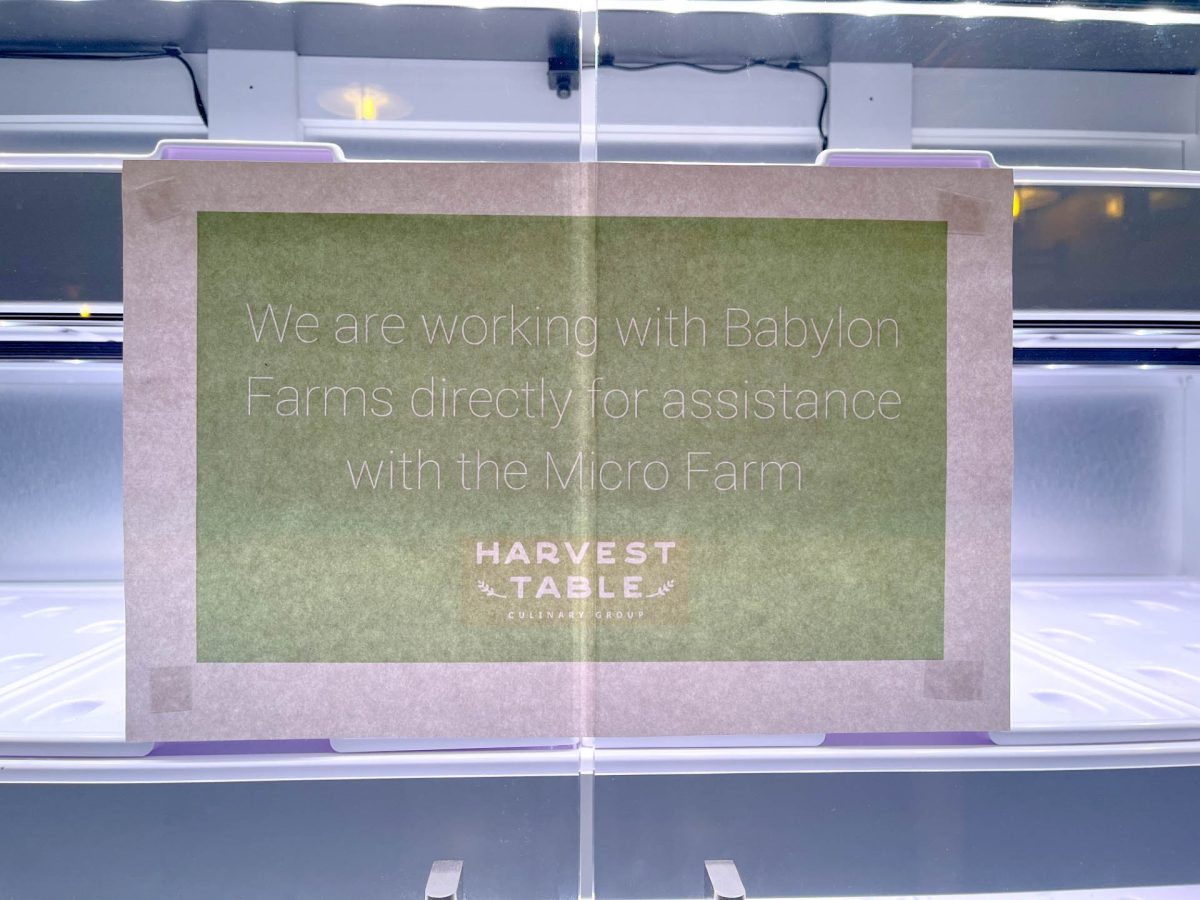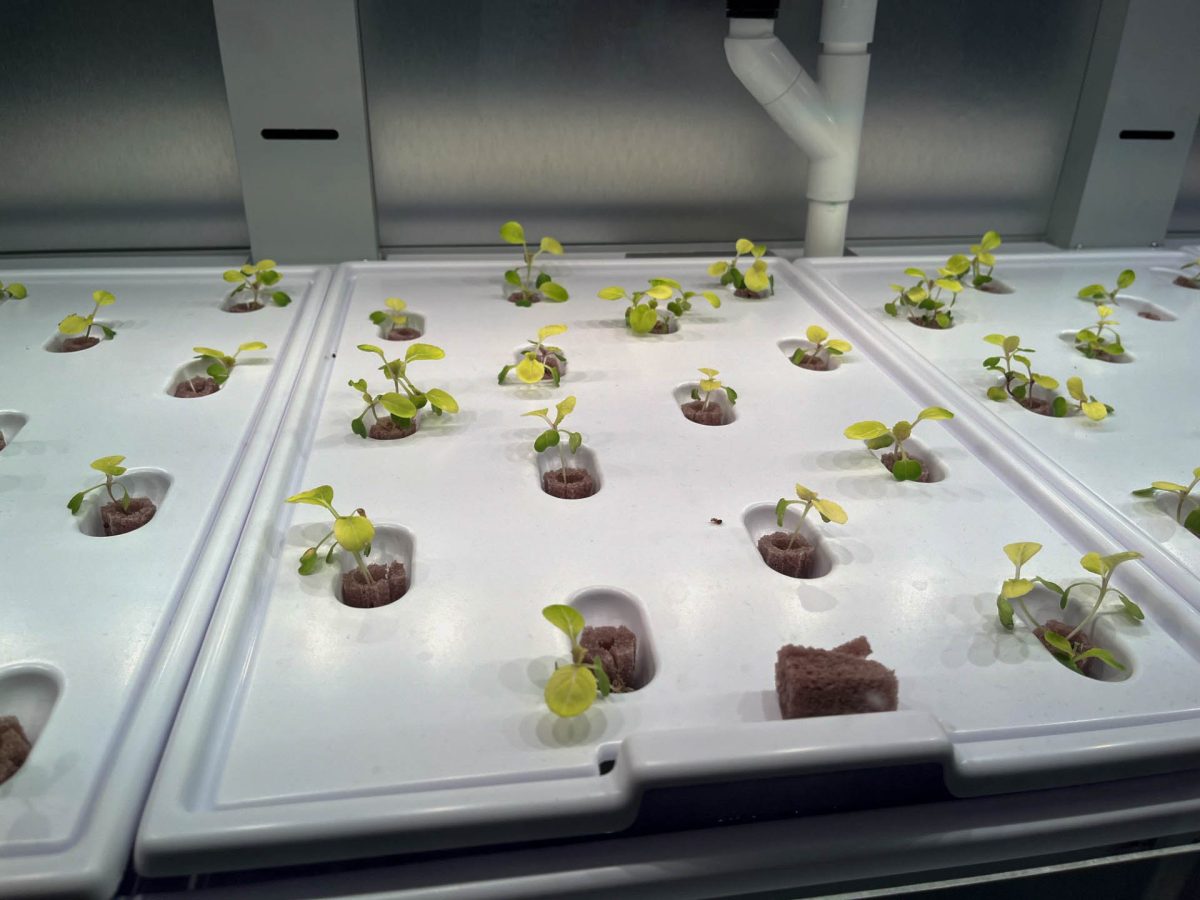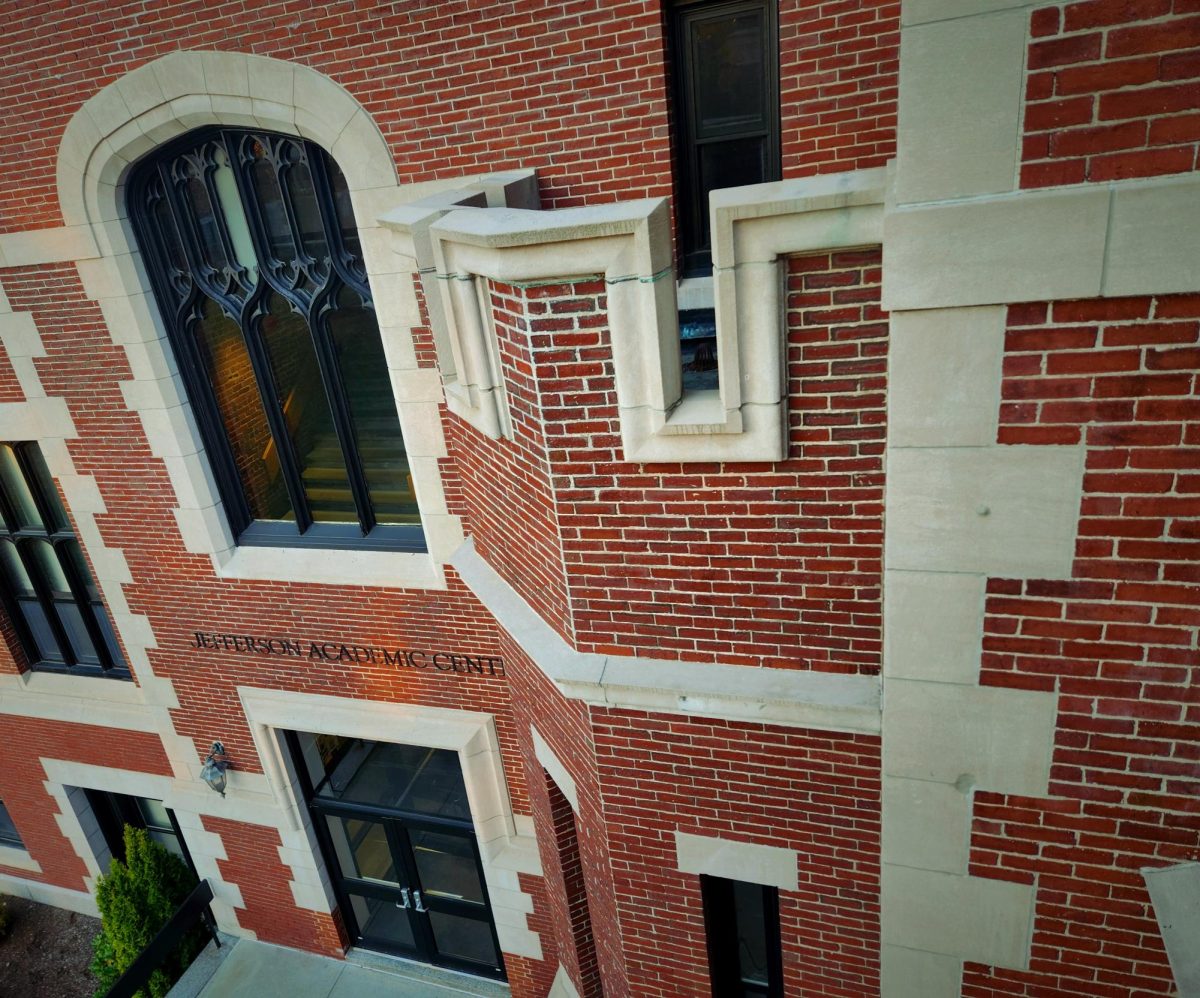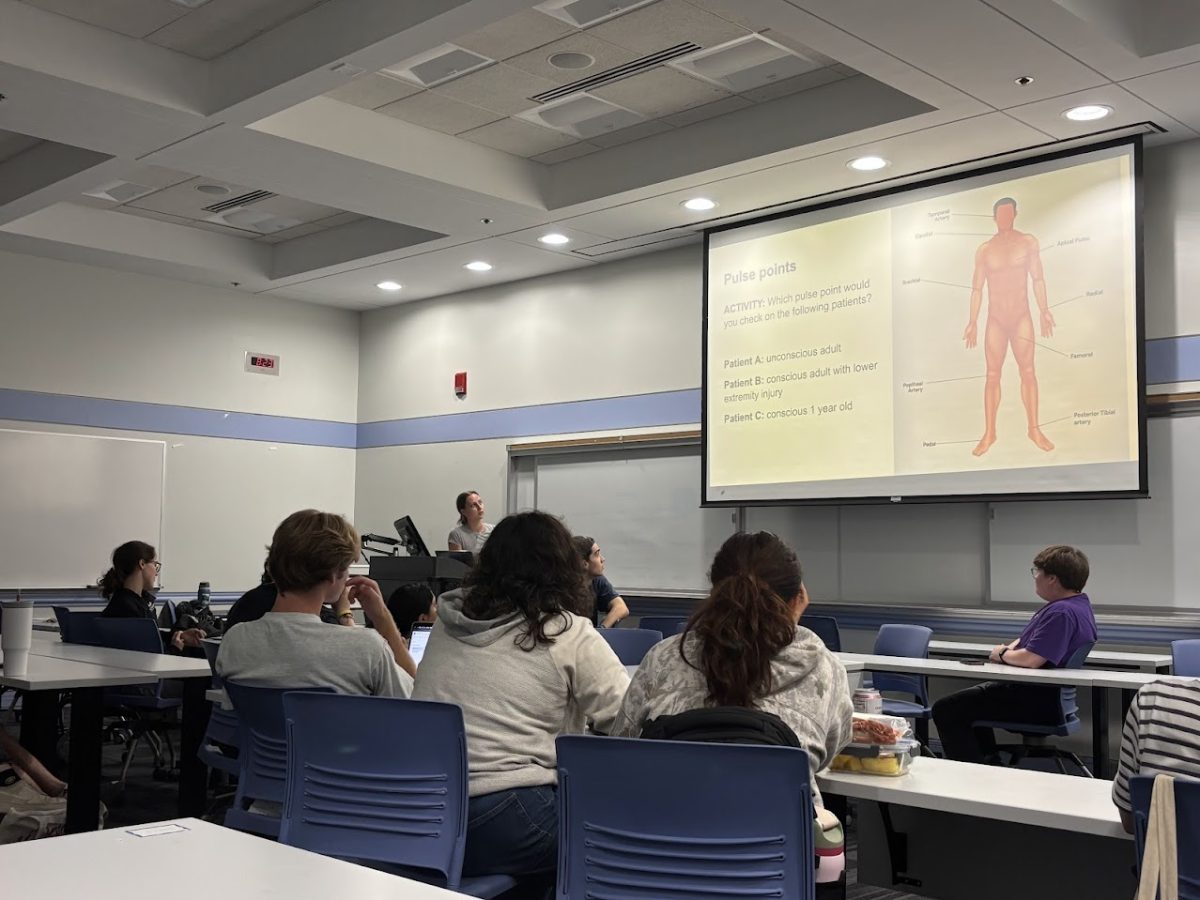Harvest Table Culinary Group has made a number of changes aimed at offering students healthy, local and sustainable meal choices since taking over dining services at Clark University this summer. Perhaps the most visible of these changes has been the installation of a vertical micro-farm in Higgins at the beginning of this semester. According to a banner next to the unit, the micro-farm aims to provide greens to students at a lower environmental cost.
According to Clark student Owen Chase, this banner does not tell the full story. Chase owns the business Just For Fun Farms, which grows and sells microgreens to local restaurants as well as at farmers markets and the Clark Collective pop-up on Wednesdays. Chase said that he reached out to Harvest Table before the company took over dining services at Clark to see if they wanted to buy microgreens from his company. Harvest Table seemed interested, but wanted Chase to get product liability insurance, a standard procedure in
the industry. Chase says that he obtained the proper insurance over the summer and tried reaching back out to Harvest Table about selling them microgreens now that he has the proper paperwork. He initially received a response from Harvest Table, but as of November has not obtained a reply from the representative who buys their produce.
Meanwhile, the micro-farm in Higgins has failed to grow any produce since its installation in August. The first batch of planted crops turned yellow and began to die after a few weeks. The dead crops were then removed and the farm sat idle, with the lights on, several weeks later. New seedlings were added a few days before Family and Friends Weekend but those appear to be yellowing, similarly to the previous batch.
“When the leaves are yellow it’s an obvious sign there’s not enough nutrients,” Chase explained. “These hydroponic systems are thousands of dollars and there’s extensive research so they know exactly how much you need to add and when you need to add it. So that shouldn’t have been a problem unless they don’t have nutrients at all or don’t have someone working on it.”
The cost of the micro-farm’s failures are not insignificant. Although a unit price is not available on the Babylon Micro-Farms website for the “Galleri” farm model installed in Higgins, units roughly half the size, such as the STEM Garden, retail for $6,495. The website does reveal that the Galleri farm in Higgins consumes 13 kilowatt hours of electricity per day.
Since the micro-farm lights have remained nearly the entire time since the beginning of September, this means that over 800 kWh of electricity have been used to power the dying microgreens in Higgins. This is more electricity than the average American household uses in 3 weeks, according to the U.S Energy Information Administration.
Some students are frustrated with the failure of the micro-farm project to get off the ground, especially given its cost.
“Whatever work, labor and money has gone into this thing could be better used in other places,” Oliver Briskin, an English major, said. “It seems like lip service to sustainability.”
“It’s a little ridiculous because the plants were clearly struggling, and they just put new plants in without changing anything as if that was going to yield different results,” says Lucy Bonat, a biology major.
Chase has a more upbeat perspective; “I think the farm is good,” he concluded. “Long-term it’s definitely a good investment because it’s so much cheaper to grow the produce yourself. But right now it’s not growing anything and it’s only good if they can grow the produce.”
Chase is separately in talks with Harvest Table to sell them microgreens directly.
“Selling in the community where I started, going to a higher level in that community, would be really cool,” Chase said. “What could be better than a business that started at Clark selling to Clark?”
When reached for comment, Harvest Table reiterated their commitment to getting the micro farm working: “We are working with Babylon Farms directly for assistance in this matter and are dedicated to get our system working well, as it does across many of our locations,” they wrote.
Additionally, the dying greens were recently removed and the following sign was posted on the micro-farm:





